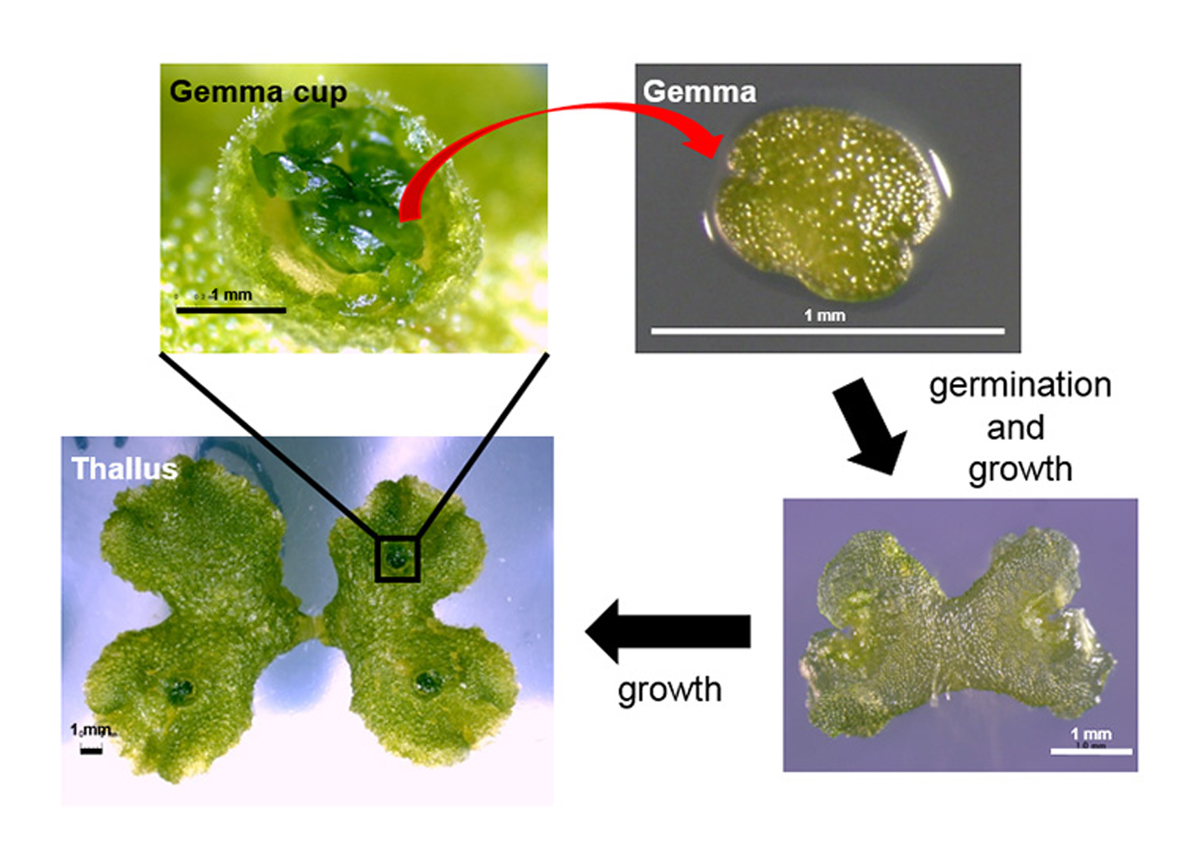
Researchers Discover ‘KARAPPO' Gene, Reveals How Plants Reproduce through Cloning
November 6, 2019| |
An international cross-institutional research group has identified the mechanism by which liverwort (Marchantia polymorpha) asexually reproduces through the development of clonal progenies (gemmae). The team discovered the gene ‘KARAPPO', which is essential for initiating gemma development in liverwort. The findings of this research are expected to contribute fundamental knowledge towards technological developments to boost agricultural and horticultural cultivation efficiency.
Vegetative reproduction is a form of asexual reproduction where individual plants are developed directly from the tissues of the parent plant. Liverwort reproduces by forming clones of itself (collectively called gemmae) in a gemma cup (see photo). These cups form on the thallus, or body, of the plant. Inside the gemma cup, epidermal cells undergo cell elongation followed by two cycles of asymmetrical cell division in order to form a gemma cell and a basal cell. This gemma cell continues to divide before finally forming a new plant.
The research team focused on two mutant liverworts named karappo-1 and karappo-2. Karappo means empty in Japanese, and the mutants were given these names because no initial gemma developed in the cups on these plants. Next generation DNA sequencing of the mutants allowed the researchers to identify the gene responsible for gemmae development- which they named ‘KARAPPO'.
Analysis of the amino acid sequences revealed that the KARAPPO gene encodes the RopGEF, a type of small GTP-binding protein found in plants. It acts like a ‘switch' and signals a range of cellular processes. The RopGEF encoded by KARAPPO was found to trigger cell elongation and asymmetrical cell divisions in the initial stage of gemma development, confirming that the KARAPPO gene is absolutely essential in triggering the processes for vegetative reproduction in liverwort.
For more details, read the article in Kobe University's website.
| |
You might also like:
- Scientists Discover Genetic Trigger for Asexual Plant Reproduction
- Turning Sexually Reproducing Plant to Asexual Reproduction
- ISAAA Pocket K No. 15: 'Omics' Sciences: Genomics, Proteomics, and Metabolomics
Biotech Updates is a weekly newsletter of ISAAA, a not-for-profit organization. It is distributed for free to over 22,000 subscribers worldwide to inform them about the key developments in biosciences, especially in biotechnology. Your support will help us in our mission to feed the world with knowledge. You can help by donating as little as $10.
-
See more articles:
-
News from Around the World
- Golden Rice Hailed As One of PMI's Most Influential Projects of the Last 50 Years
- Pumpkin Genomes Reveal Uncommon Evolutionary History
- Scientists Double Sorghum Grain Yields by 200%
- Researchers Discover ‘KARAPPO' Gene, Reveals How Plants Reproduce through Cloning
- New Book on Science of Communicating Science Published
- EU to Face Economic Disaster if GMO is Banned, Food Safety Commissioner Says
-
Research Highlights
- Increase in Maize Yield Results from Overexpression of Single Gene
- Long-read Sequence Technology Used to Find Genes for Improvement of Watermelon Traits
-
Plant
- CRISPR-Cas9 Used to Alter Anthocyanin Production in Black Rice
- Bacterial Blight Resistant Rice Developed thru Genome Editing
-
Read the latest: - Biotech Updates (December 17, 2025)
- Gene Editing Supplement (December 17, 2025)
- Gene Drive Supplement (February 22, 2023)
-
Subscribe to BU: - Share
- Tweet

